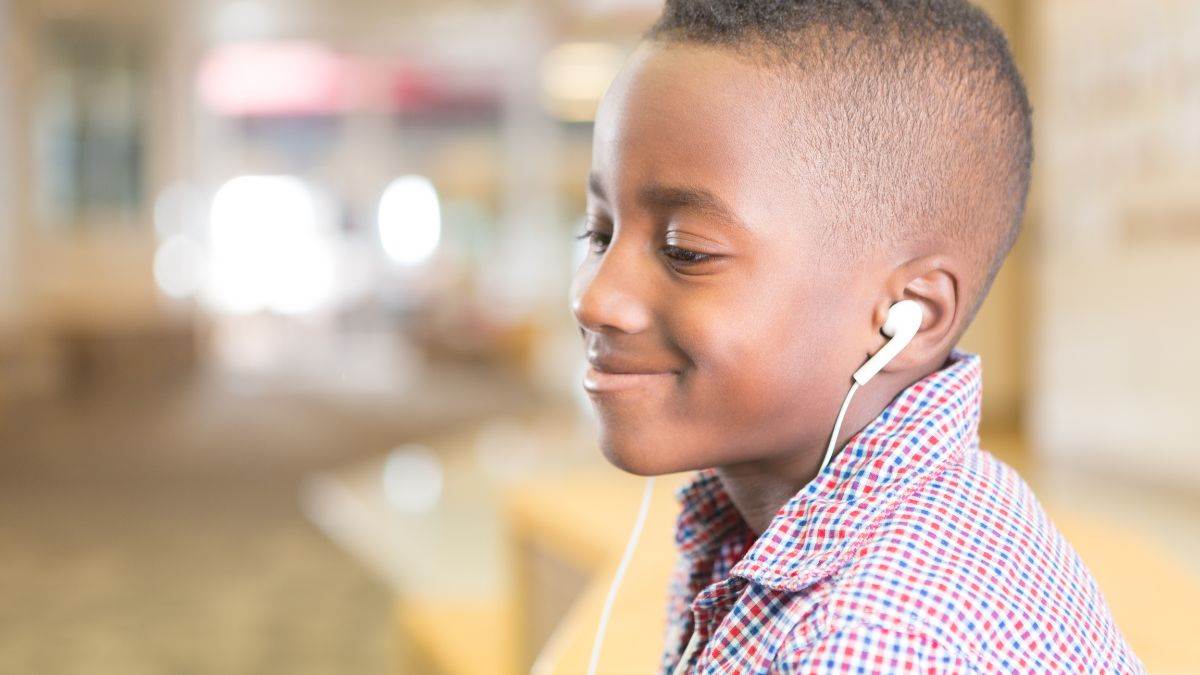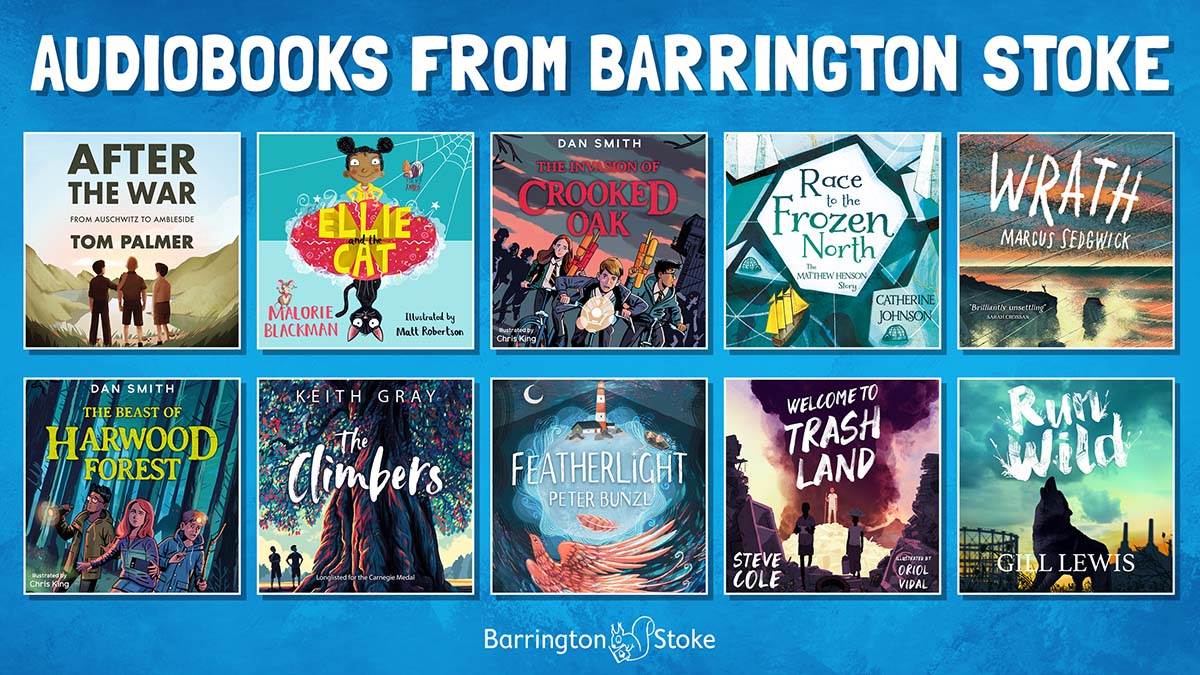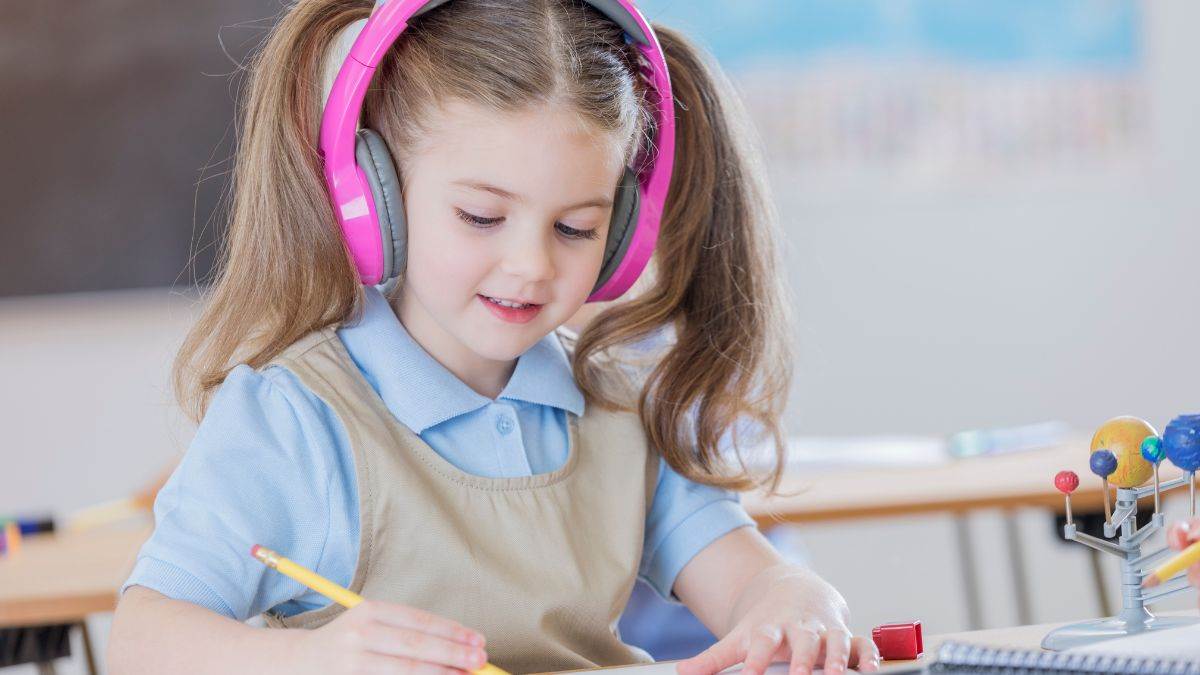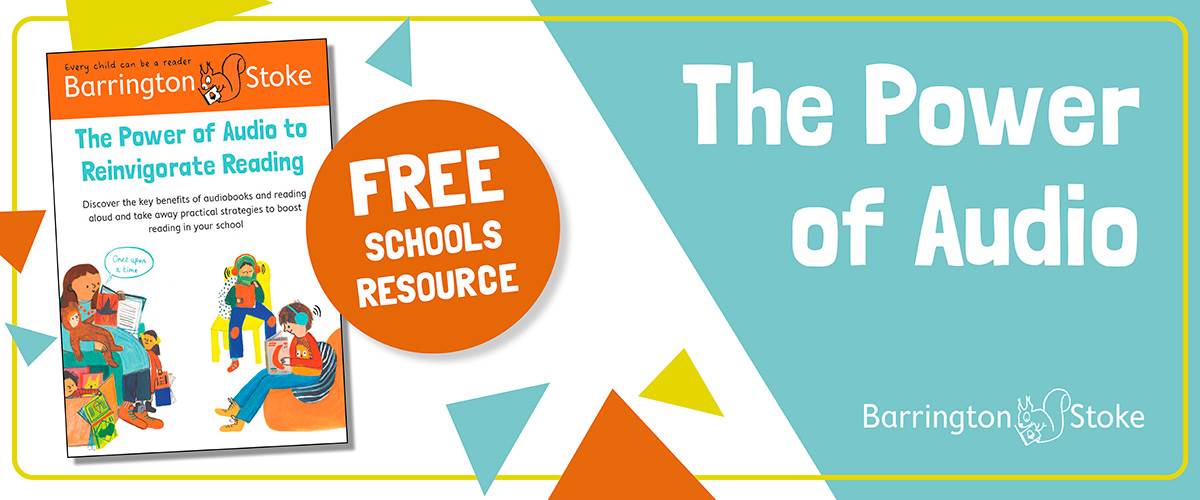5 ways to use audiobooks in the classroom
Published on: 11 September 2023
The publisher Barrington Stoke shares five practical strategies to re-invigorate reading in your school through the use of audiobooks.

What are the benefits of listening to a story?
Establishes reading for pleasure
We often talk about the joy of becoming totally immersed in a story. But consider how difficult this is if you are still in the process of learning to read. If you're working hard to decode words, understand unfamiliar vocabulary and decipher the meaning of the text, there's little room to follow the plot, imagine the characters, and enjoy the experience.
Hearing a story being read - whether it's via audiobooks or someone reading to you - frees up students' minds to imagine and to empathise, helping them to step inside a book.
This freedom to enjoy a book creates a fundamentally important connection between the process of learning to read and reading for pleasure. And not only does reading for pleasure increase students' attainment across the curriculum, but it also boosts their wellbeing and overall happiness.
Facilitates reading at home
Reading is a habit and, like any habit, it needs regular repetition to be fully embedded. School plays a large role in this but we know that accessing books at home is crucial in developing fluent readers. So how do we encourage children to read or be read to at home?
Not all parents are confident in their own reading skills and, for some, English isn't their first language. This is where audiobooks can play an important role and can be a way to break down barriers at home. Their accessibility and convenience make books more readily available and can be a way of drawing in parents who may themselves be reluctant readers.
Whether they're being played during a bus journey, listened to before bedtime, or enjoyed independently whilst walking to school, they can help to establish a reading culture outside of the classroom, a key stepping-stone in nurturing confident, independent readers.

Five key strategies to incorporate audio into your teaching
1. Build excitement with a teaser chapter
Playing an audio clip from your upcoming whole-class read can be a fun way to engage your students from the outset. Trying a different format can be an especially helpful hook for reluctant readers who might feel intimidated by the book. Audio is a way of introducing the story to them, igniting their imagination and encouraging them to read on.
Another activity to try is to play your class the opening chapter from three or four books and ask them to vote for their favourite. This gives pupils agency over which book will be read next and you might find that some of the class will even go and seek out the books that aren't chosen to read independently.
2. Share your favourite audio clips around the school
To raise the profile of reading, place QR codes on wall displays around the school, linking to teachers and students reading extracts from their favourite books. Encourage pupils to use class tablets to scan the codes and discuss the readings.
By making the audio clips visible and accessible across the school, you can encourage a shared reading environment. It can break down barriers to reading by fostering a discussion around books and establishing a reading community.
3. Perform your class text and predict the audiobook

To really bring the story to life, you could perform extracts of your whole-class novel. Split the class into small groups, assigning each group a chapter or section of the book. Before playing the audio version, ask pupils to predict how it will be read aloud. Ask them to consider how characters might sound. They should think about accent, tone, pace and volume.
Ask them to first perform their section and then play them the audiobook to compare the different techniques used. Did the audiobook include pauses that aren't obvious in the written text? How did the audiobook deal with building suspense? Can they hear the differences in inflection and intonation? This can be a helpful tool for exploring inference, which is a tricky concept for many learners.
4. Guess what happens next
To deepen your students' engagement with a story, play the audiobook version and pause, ideally on a cliffhanger, to ask the class to imagine the direction the plot might take.
Discuss options for what will happen next and encourage them to make up their own ending to the story. Not only can this activity be used as a creative writing opportunity, but it will boost their interest in the book as they wait to find out if they have guessed correctly (or not).
5. Create a cosy atmosphere
Encourage reading for pleasure by setting aside a dedicated time and space to listen to a story. Put out some blankets and cushions, dim the lights and play a recording of a log fire on the smartboard.
This creates an atmosphere for students to get comfy, relax and enjoy the story. By creating a different setting from their usual lesson format, it shows that reading isn't just something to be learnt in school but can open up a whole new world of imagination and storytelling.
The benefits of audiobooks and reading aloud are extensive. As a learning tool, audio gives learners the opportunity to expand their vocabulary, improve their comprehension and develop reading techniques. But on a wider level, audio can help pupils to 'see' themselves as readers. It can demonstrate that reading can be a shared experience, a collective opportunity to come together and get lost in a good book.
Find out more on the Barrington Stoke website
Contributors
We worked with a cross-section of teachers to develop this guide to the power of audio. We are really grateful to everyone who shared their experiences of using audio in the classroom and their strategies for incorporating it into the classroom.
Thank you to:
- Laura Baxter, English Lead/Curriculum Lead/Phase Leader
- Hannah James-Thomas, Class Teacher
- Christopher Harrison, Headteacher
- Emma Thomas, Head of English
- Sadie Phillips, English Lead and KS2 English teacher
- Rob Crossley, Assistant Headteacher
- Chris Curtis, Head of English
- Julie Sutherland, Librarian






